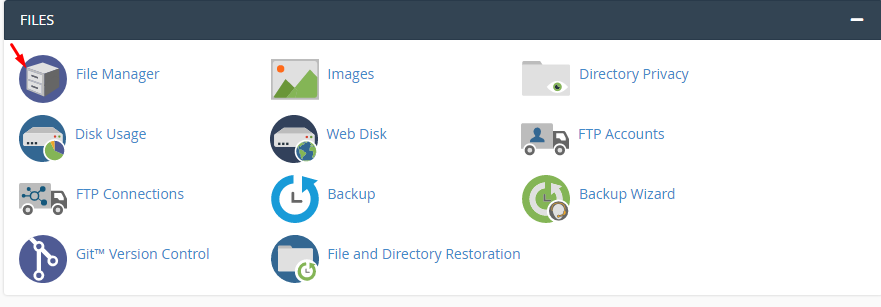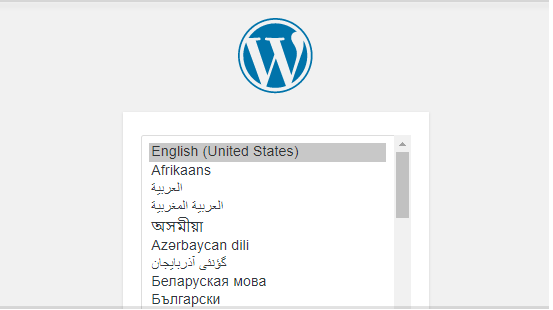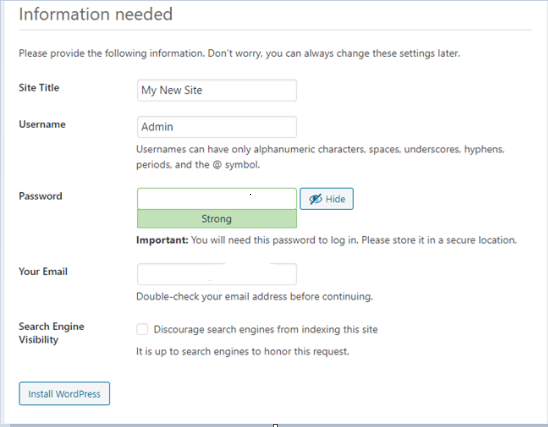Overview: WordPress is a PHP-based open-source content management system that works with either a MySQL or Maria DB database. A plugin architecture and a template system, referred to as Themes in WordPress, are among the features.
This article will walk you through the steps to install WordPress.
Step 1: Download WordPress
1: Download the WordPress kit from https://wordpress.org/download/ to your local device
2: Download the file and unzip it to a folder on your computer.
Step 2: Upload WordPress to Hosting Account
When it comes to uploading WordPress to your hosting account, you have three choices. You were left with a folder called wordpress after unzipping the file in Step 1, and the contents need to be uploaded to your hosting account's file manager. This can be done in one of three ways:
1.Upload via FTP - For more detail, see FTP Getting Started.
2.Upload using the File Manager - For guidance, see How to Upload Using the File Manager.
3.Upload via SSH - For instructions, see How to Get and Use SSH Access.
Step 3: Create MySQL Database and User
WordPress keeps track of the data in a database. As a result, a database must be established.
- Go to cPanel and log in.
- Click the MySQL Database Wizard icon in the Databases section.

- Create A Database, enter the database name, and click Next Step.
- Create Database Users, enter the database user name and password, and click Create User.
- Add User to the Database, click the All Privileges checkbox and click Next Step.
- Complete the task, make a note of the database name, username, and password, as you will need them for Step 4⤵below.
Step 4: Configure wp-config.php
The database information is stored in the wp-config-sample.php file, which informs the WordPress application which database to pull data from. This phase must be completed to ensure that the WordPress installation is linked to the correct database details.
The wp-config-sample.php file can be found in File Manager in the folder where WordPress is installed. The folder for your primary domain is public_html by default, so the steps below show the process for that folder.
- Go to cPanel and log in.
- Click the File Manager icon in the Files section.

- Select public_html in File Manager's left-hand navigation menu to open the folder in the right-hand column.
- To open a pop-up window on your desktop, click the Settings button in the top right-hand corner of your File Manager.

- In the pop-up box, check the box for Show Hidden Files (dotfiles), then click Save.
- In the right-hand panel of the File Manager, locate the wp-config-sample.php file.
- Right-click the file, select Rename, rename it to wp-config.php, and then save the change by clicking the Rename File icon.
- Right-click on the wp-config.php file and select Edit.
- A second pop-up box will appear; click the Edit button to continue to the file.
- When the file opens, look for the following information:

- Replace database name here with the name of the database you made (see Step : Build MySQL Database and User above).
- Replace username_here with the username of the database you created.
- Replace password_here with the password of the database that you created.
Note: Make sure your database name, username, and password don't have any spaces before or after them.
- When done editing, click the Save Changes button on the top right, and then Close to close the file and return to the File Manager.
Step 5: Run the Installation
To run the installation script, open a new browser window and type in your domain. You will be automatically redirected to one of the following URLs, depending on where you installed the script:
If you uploaded WordPress to the domain's root folder, you should be redirected to:
Example: https://example.com/wp-admin/install.php
If you installed WordPress in a subfolder of your domain's root directory, the URL will look like this:
https://example.com/yoursubfolder/wp-admin/install.php
Be sure to replace example.com with your own domain name in the example above.
Step 6: Complete the Installation
- When you go to the correct WordPress URL in a browser, you'll be taken to a WordPress setup page where you can choose your preferred language. Click the Continue button after selecting your preferred language.

- You should now see a welcome page that says, "Welcome to the famous five-minute WordPress installation process!" Under the Information needed section, you'll need to fill out the following fields:

- Site Title - This can be changed at a later time.
- Username - This is the admin username for the site. We highly recommend using something other than 'admin' since using it can pose a security risk.
- Password- A strong password will be automatically generated for you, but you can choose your own. The strength indicator will let you know how secure your password is.
- Your Email- Login information will be sent to this email address, so make sure it is an email address you have access to.
- Search Engine Visibility- If you want your website to show up in search engine results, leave this unchecked. If you do not want your site indexed, then you can check this box.
- You should be taken to the final screen after clicking the Install WordPress button, which states, "WordPress has now been set up. Thank you so much, and have fun! ".. It will display your username and a substitute for your password from the previous tab. To begin building your site, click the Log In button to log in to the WordPress Admin Dashboard.
